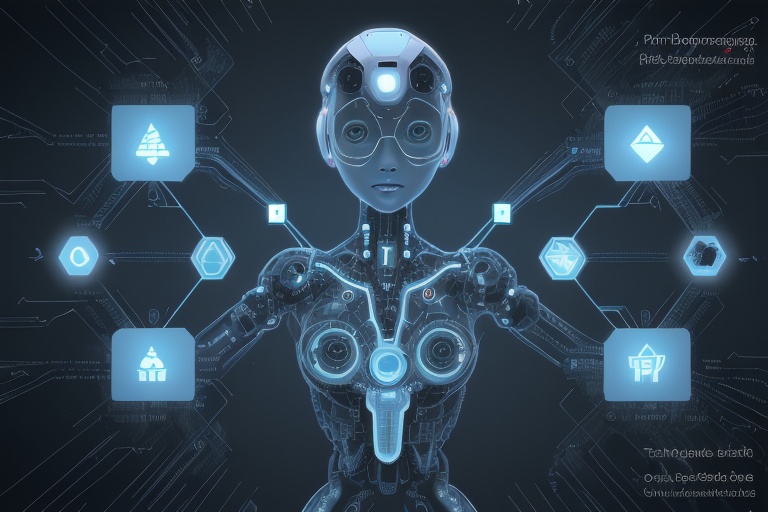The advent of generative artificial intelligence (AI) has introduced a paradigm shift in the way we perceive creativity, productivity, and the very nature of work. This innovative frontier within the AI realm is not merely a technological marvel; it is reshaping the fabric of industries, redefining the roles of human workers, and prompting a reevaluation of the workforce landscape as we know it.
The advent of generative artificial intelligence (AI) has introduced a paradigm shift in the way we perceive creativity, productivity, and the very nature of work. This innovative frontier within the AI realm is not merely a technological marvel; it is reshaping the fabric of industries, redefining the roles of human workers, and prompting a reevaluation of the workforce landscape as we know it.
The Essence of Generative AI
At its core, generative AI describes AI systems capable of producing new, original content after analyzing and learning from extensive data sets. Breaking away from the confines of rule-based programming, these machines employ sophisticated algorithms to emulate human-like outputs across diverse domains. From writing articles to composing music, and even developing software, generative AI represents a significant leap from conventional AI models.
This trailblazing technology has ushered in a wave of automation possibilities, challenging the long-held belief that certain tasks are exclusively human domains due to the inherent need for creativity and nuanced understanding. Generative AI has the potential to automate complex processes that once demanded a significant degree of human ingenuity.
The Workplace Transformed
The intersection of generative AI and the job market gives rise to pivotal discussions about the future of employment. A McKinsey report predicts that AI could automate between 60% and 70% of tasks, potentially supplanting certain jobs altogether. For instance, the enhancements AI brings to specific roles might render the corresponding support positions redundant. The emergence of AI has already been linked to job losses, with thousands of positions being impacted as recently as May 2023.
Compounding the issue, large language models (LLMs) like OpenAI's ChatGPT pose considerable disruption to the U.S. workforce. With projections indicating that 80% of jobs will experience at least a 10% shift due to LLMs, real-world scenarios, such as a writer displaced by an AI counterpart, "Olivia/ChatGPT," are becoming more frequent. These instances underscore the urgency for deliberate discussion and policymaking concerning AI's role in the workplace.
Addressing Gender Disparities
One concerning aspect of AI's ascent is its unequal impact on job displacement across genders. Studies, including one from the Frank Hawkins Kenan Institute of Private Enterprise, point to a disconcerting trend: approximately 79% of working women have jobs vulnerable to automation, in contrast to 58% of their male counterparts. This disparity invites a closer examination of how generative AI might exacerbate existing gender inequalities within the labor market.
The Silver Lining: AI and Human Synergy
Amidst these challenges, generative AI is not a harbinger of doom for the workforce. By automating monotonous tasks, AI enables workers to allocate their energies toward more intellectually stimulating and creative pursuits. This collaboration between humans and AI has the potential to elevate job satisfaction and refine the overall work experience. Furthermore, the development and enhancement of AI models hinge on the critical input provided by humans—a process known as reinforcement learning from human feedback. Such a symbiotic relationship ensures AI models advance in line with human values and objectives.
Overcoming AI Challenges
However, this burgeoning partnership is not without its hurdles. For example, a generative AI chatbot may flood the market with subpar content, necessitating rigorous editing by human professionals. This could inadvertently shift focus away from exploring diverse information sources and potentially impede productivity gains.
Reimagining Administrative Roles
The impact of generative AI is all-encompassing, extending its reach beyond individual jobs and touching various industries. In the administrative realm, generative AI tools can revolutionize by automating routine tasks, enabling office administrators and assistants to dedicate their time to more strategic responsibilities.
The Bigger Picture
As the capabilities of generative AI continue to evolve, it is imperative to address not only the technological advancement but also the ethical and societal ramifications. Establishing fair, transparent, and equitable AI deployment practices ensures we can harness the benefits of AI while mitigating its potential adverse effects.
Although generative AI presents an array of challenges and concerns, particularly around content creation and ethics, these are matters we will explore in greater depth in the next article of this series. By examining these varied dimensions, we aim to present a comprehensive view of this transformative technology and its influence on individuals and businesses alike. Stay tuned as we delve further into the implications generative AI holds for today's society and the future that lies ahead.
Information for this article was gathered from the following source.

